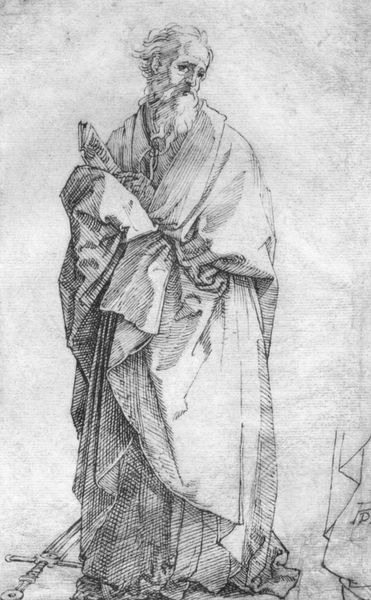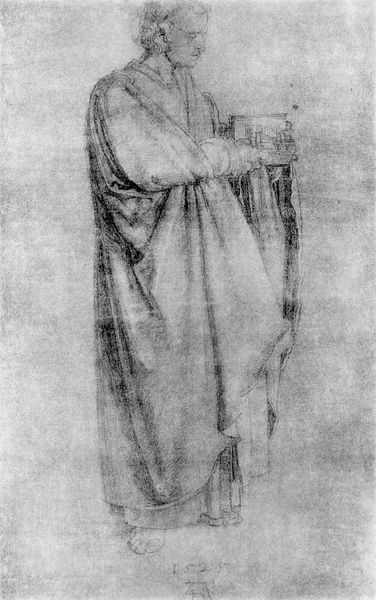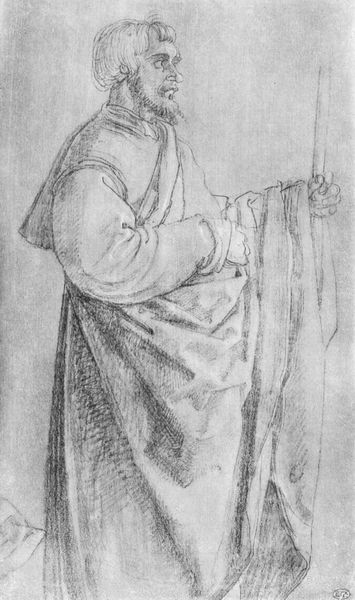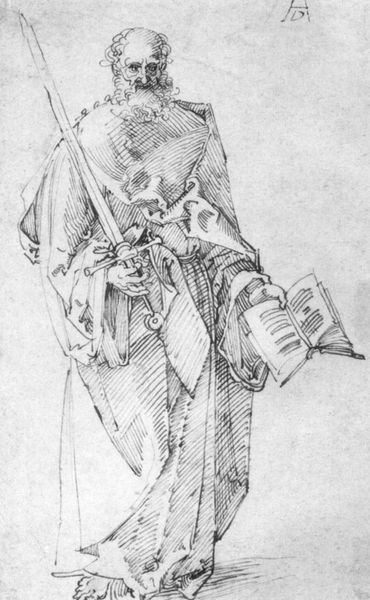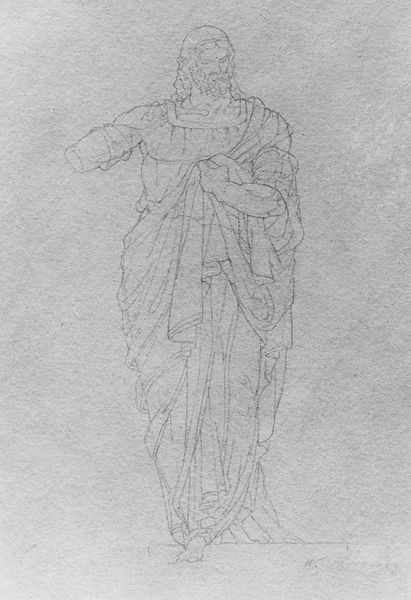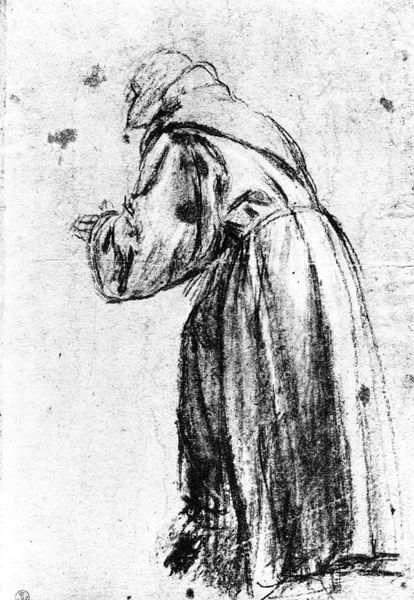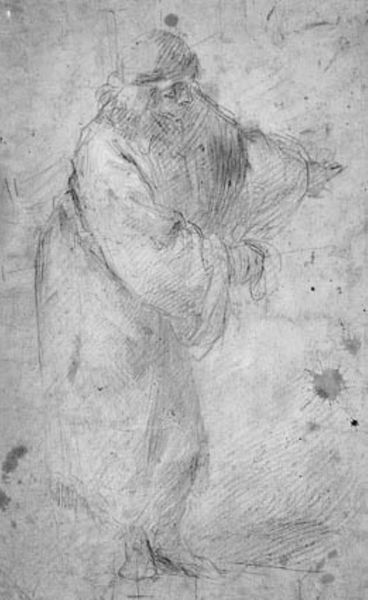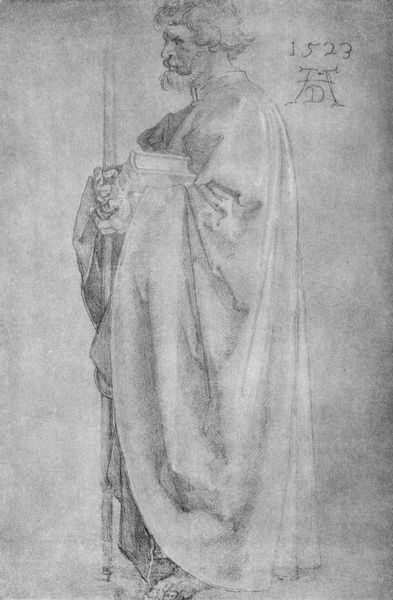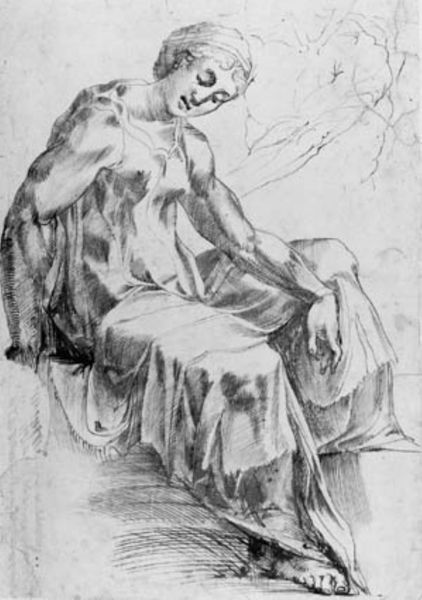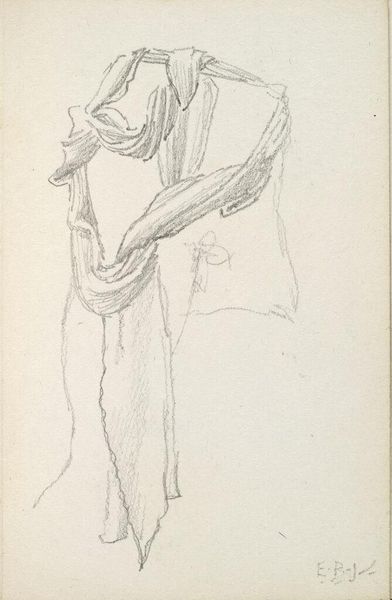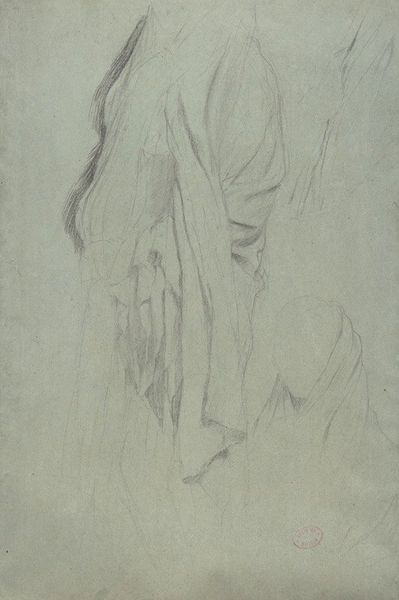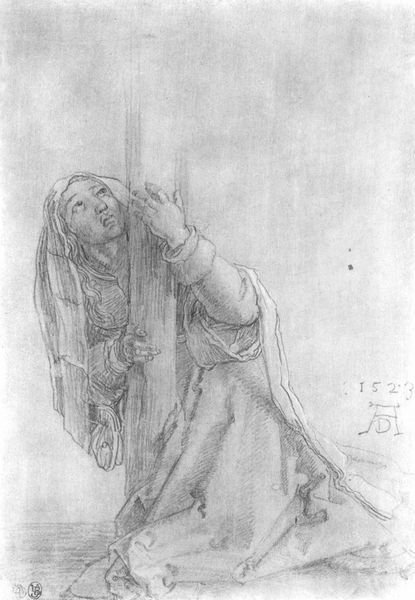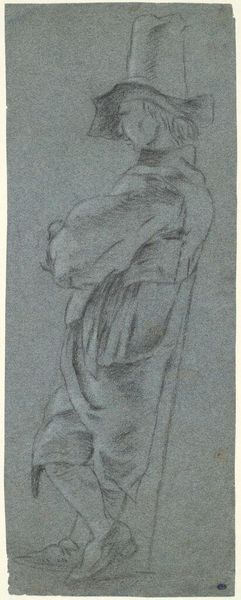
drawing, pencil
#
portrait
#
drawing
#
charcoal drawing
#
figuration
#
11_renaissance
#
pencil
#
northern-renaissance
Copyright: Public domain
Editor: This drawing is Albrecht Dürer’s “Apostle Bartholomew” from 1523. It’s done in pencil and charcoal and captures Bartholomew holding a book and what looks like a staff. The figure feels so immediate, despite being from the Renaissance. What can you tell me about the context for Dürer creating portraits like this? Curator: Well, we need to consider the function of religious imagery during the Reformation. Dürer lived during a time of immense religious upheaval, with challenges to the Catholic Church’s authority. Prints and drawings, being more affordable and portable than paintings, became vital tools for disseminating ideas. What do you think a drawing of an apostle like Bartholomew might have been trying to achieve in this climate? Editor: Perhaps reaffirming religious figures amidst the turmoil? Showing the unwavering faith, maybe? Curator: Precisely. These images acted as powerful visual statements. Dürer was Lutheran, and while his art often reflected biblical narratives and celebrated Christian ideals, he wasn't simply producing straightforward propaganda. These drawings, circulated through prints, allowed individuals to have a personal connection with religious figures, bypassing the established Church hierarchy. The composition with Bartholomew’s tools becomes a focal point too. Does his prominence shift the public's role from viewer to participant in that era? Editor: I see. So, it's not just about depicting a religious figure, but about empowering individuals through access to these images. I guess art can serve both a spiritual and a political purpose. Curator: Exactly. And Dürer was highly aware of that interplay. Thinking about the context of how Dürer's “Apostle Bartholomew” was distributed sheds light on the social forces driving the art market and imagery politics of the time. It reshaped popular devotion, where people had personal images rather than strictly relying on public-only images. Editor: This really changes my perception of Renaissance art. It's far from static! Thanks for expanding my view on art and history, revealing how art functioned politically and impacted imagery and influence on people. Curator: My pleasure! Seeing art as an active agent of change gives a new dimension.
Comments
No comments
Be the first to comment and join the conversation on the ultimate creative platform.

